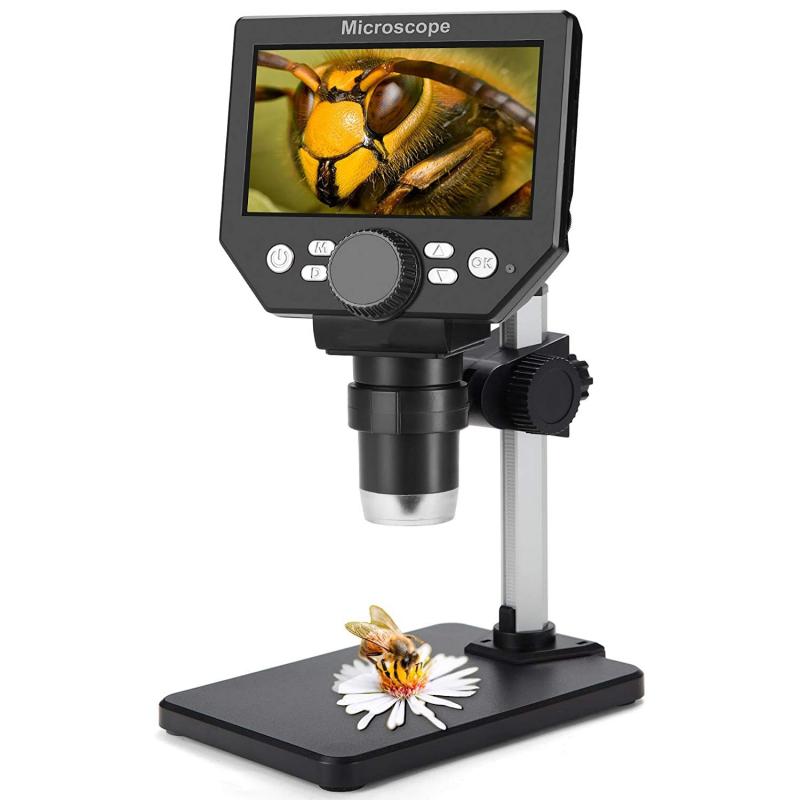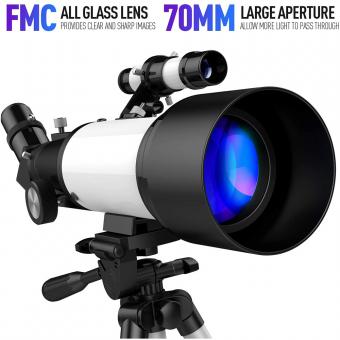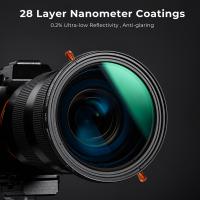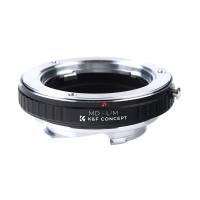How To Write Microscope Magnification ?
Microscope magnification is typically written as a numerical value followed by "x" or "times." For example, if a microscope has a magnification of 40x, it means that the object being viewed appears 40 times larger than its actual size. The magnification of a microscope is determined by the combination of the objective lens and the eyepiece. The objective lens is responsible for the primary magnification, while the eyepiece further magnifies the image. To calculate the total magnification, you multiply the magnification of the objective lens by the magnification of the eyepiece. For instance, if the objective lens has a magnification of 10x and the eyepiece has a magnification of 20x, the total magnification would be 200x (10x multiplied by 20x). It is important to note that the maximum achievable magnification of a microscope is limited by factors such as the quality of the lenses and the resolution of the microscope.
1、 Understanding Microscope Magnification: Basics and Terminology
Microscope magnification refers to the ability of a microscope to enlarge an object or specimen, allowing for a closer examination of its details. Understanding microscope magnification is crucial for scientists, researchers, and students who rely on microscopes for their work.
To write about microscope magnification, it is important to cover the basics and terminology associated with it. Begin by explaining the concept of magnification, which is the ratio of the size of an object as seen under the microscope to its actual size. This can be expressed as a numerical value, such as 100x or 1000x, indicating how many times larger the object appears under the microscope.
Next, discuss the different types of magnification. Microscopes typically have two types of magnification: objective magnification and eyepiece magnification. Objective magnification is determined by the lenses in the microscope's objective, while eyepiece magnification is determined by the lenses in the eyepiece. These two magnifications are multiplied together to give the total magnification.
It is also important to mention the concept of resolution, which is the ability of a microscope to distinguish between two closely spaced objects. Higher magnification does not necessarily mean better resolution, as it depends on the quality of the microscope's lenses and other factors.
Additionally, it is worth mentioning the latest advancements in microscope magnification. With the advent of digital microscopy, it is now possible to capture images and videos of magnified specimens, allowing for easier analysis and sharing of results. Furthermore, techniques such as confocal microscopy and electron microscopy have pushed the boundaries of magnification and resolution, enabling scientists to study objects at the nanoscale.
In conclusion, writing about microscope magnification should cover the basics and terminology, including objective and eyepiece magnification, as well as resolution. It is also important to mention the latest advancements in microscopy technology, which have expanded the possibilities of magnification and resolution.

2、 Calculating Microscope Magnification: Formulas and Methods
Microscope magnification refers to the degree to which an object appears larger when viewed through a microscope compared to the naked eye. It is an essential aspect of microscopy and is crucial for accurately observing and studying microscopic specimens. Calculating microscope magnification involves using specific formulas and methods.
One common method to calculate microscope magnification is by multiplying the magnification of the objective lens by the magnification of the eyepiece. The objective lens is the lens closest to the specimen, and the eyepiece is the lens through which the viewer looks. The magnification of each lens is typically indicated on the microscope.
For example, if the objective lens has a magnification of 40x and the eyepiece has a magnification of 10x, the total magnification would be 40x multiplied by 10x, resulting in a total magnification of 400x.
Another method to calculate microscope magnification is by using the formula: Total Magnification = (Objective Lens Magnification) × (Eyepiece Lens Magnification) × (Tube Length Correction Factor). The tube length correction factor accounts for the distance between the objective lens and the eyepiece.
It is important to note that the magnification indicated on the microscope may not always be accurate. Factors such as the quality of the lenses, the numerical aperture, and the resolution of the microscope can affect the actual magnification. Therefore, it is recommended to calibrate the microscope using a stage micrometer or a known reference specimen to ensure accurate magnification measurements.
In recent years, advancements in technology have led to the development of digital microscopes and software that can calculate magnification automatically. These systems use image analysis algorithms to measure the size of objects and provide accurate magnification values.
In conclusion, calculating microscope magnification involves multiplying the magnification of the objective lens by the magnification of the eyepiece or using a formula that incorporates the tube length correction factor. However, it is important to consider the limitations and potential inaccuracies of the microscope's indicated magnification.
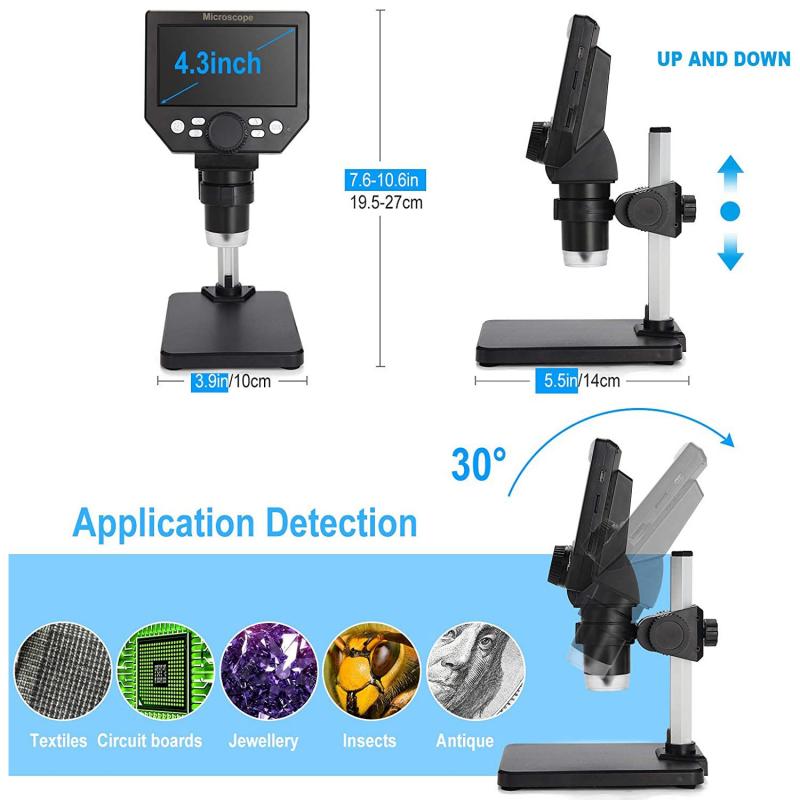
3、 Types of Microscope Magnification: Optical and Digital Techniques
Microscope magnification refers to the ability of a microscope to enlarge an object or specimen for better observation and analysis. There are two main types of microscope magnification techniques: optical and digital.
Optical magnification is achieved through the use of lenses in a traditional microscope. These lenses, including the objective and eyepiece lenses, work together to increase the size of the image produced by the microscope. The total magnification is calculated by multiplying the magnification of the objective lens by the magnification of the eyepiece lens. For example, if the objective lens has a magnification of 40x and the eyepiece lens has a magnification of 10x, the total magnification would be 400x.
Digital magnification, on the other hand, involves capturing an image or video of the specimen using a digital camera attached to the microscope. The image or video is then displayed on a computer screen or other digital device, and software is used to digitally zoom in and enhance the image. This allows for further magnification and analysis of the specimen. Digital magnification can be particularly useful for sharing images or videos remotely, as well as for capturing high-resolution images for documentation and publication.
In recent years, there has been a growing trend towards the use of digital magnification techniques. Advances in digital imaging technology have led to the development of high-resolution cameras and sophisticated software that can enhance and manipulate images in ways that were not possible with traditional optical magnification alone. Digital magnification also offers the advantage of being able to easily store and share images electronically, making it more convenient for research and collaboration.
In conclusion, microscope magnification can be achieved through optical or digital techniques. Optical magnification relies on lenses to enlarge the image, while digital magnification involves capturing and enhancing images using digital cameras and software. Both techniques have their advantages and are used in various scientific and research applications.

4、 Factors Affecting Microscope Magnification: Lens, Objective, and Eyepiece
Microscope magnification refers to the degree to which an object appears larger when viewed through a microscope compared to the naked eye. It is determined by several factors, including the lens, objective, and eyepiece.
The lens of a microscope plays a crucial role in magnification. It is responsible for focusing the light onto the specimen and forming an enlarged image. The lens can be either a single lens or a combination of lenses, such as in compound microscopes. The quality and design of the lens greatly affect the magnification and clarity of the image produced.
The objective lens is another important factor in microscope magnification. It is located close to the specimen and provides the primary magnification. Microscopes typically have multiple objective lenses with different magnification powers, allowing users to switch between different levels of magnification. The objective lens is usually labeled with a magnification factor, such as 4x, 10x, or 40x, indicating how many times larger the image appears compared to the naked eye.
The eyepiece, or ocular lens, is the lens through which the viewer looks to observe the magnified image. It further magnifies the image produced by the objective lens. The eyepiece typically has a fixed magnification power, such as 10x or 20x.
In addition to these traditional factors, recent advancements in microscope technology have introduced digital microscopes. These microscopes use digital cameras and computer software to capture and display images. The magnification in digital microscopes is determined by the combination of the lens, objective, and digital zoom capabilities. The digital aspect allows for higher magnification levels and the ability to capture and analyze images in real-time.
In conclusion, microscope magnification is influenced by the lens, objective, and eyepiece. These factors determine the level of enlargement and clarity of the image produced. With the advent of digital microscopes, additional factors such as digital zoom capabilities also contribute to the overall magnification.
